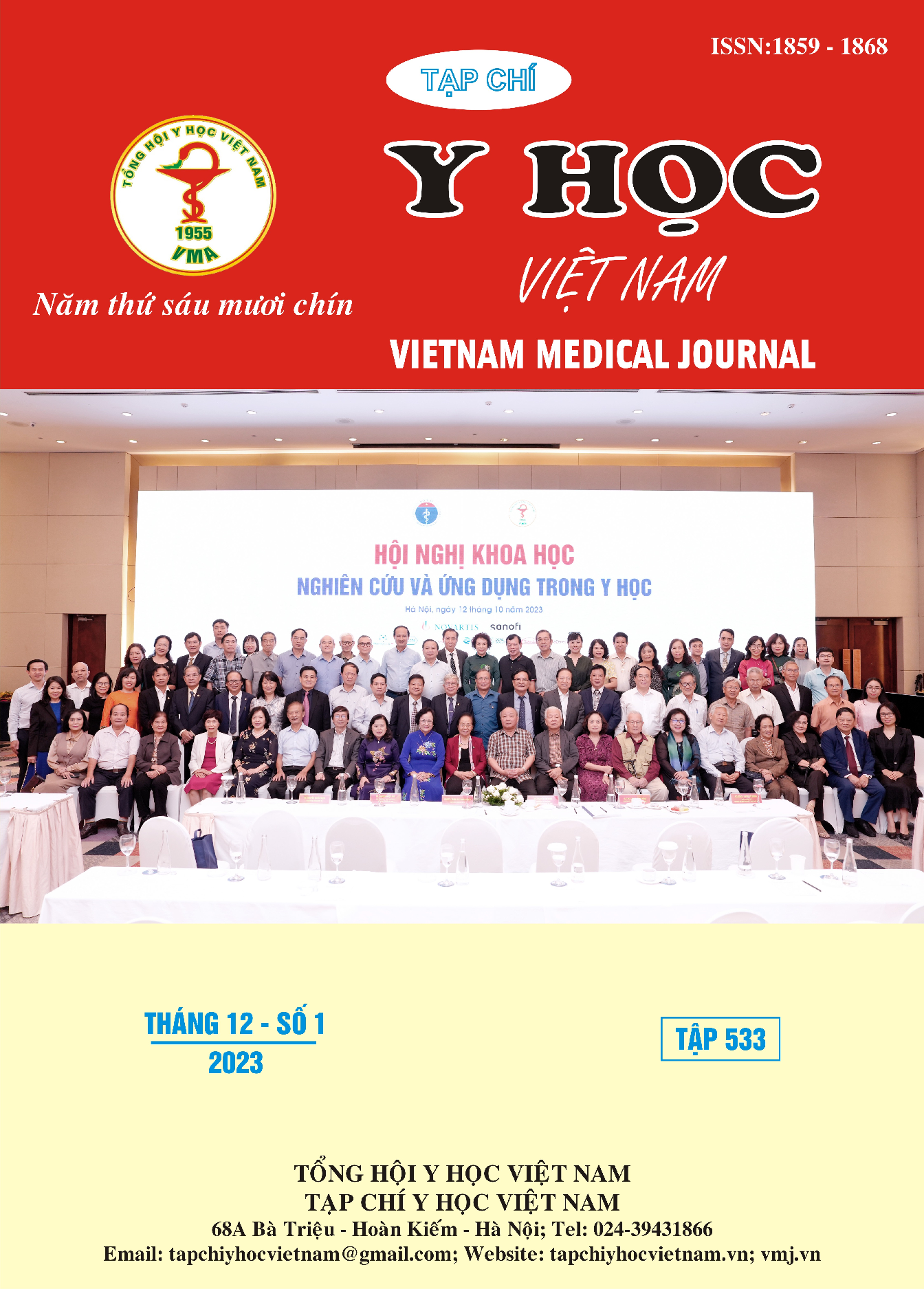CLINICAL FEATURES OF AGGRESSIVE BEHAVIOR IN ADOLESCENTS WITH MIXED DISORDERS OF CONDUCT AND EMOTIONS
Main Article Content
Abstract
Research objective: To describe the clinical characteristics of aggressive behavior in adolescents with mixed disorders of conduct and emotions. Subjects and methods: Cross-sectional description on 239 adolescent patients with mixed disorders of conduct and emotions who were inpatients and outpatients at the National Institute of Mental Health - Bach Mai Hospital from September 2022 to June 2023. Results: The proportion of patients with aggressive behavior was 74.1%, of which verbal aggression accounted for the highest rate (82.5%). The rate of physical aggression against objects, self, and other people is 79.7%, 67.8%, 50.3% respectively. Impulsive aggression accounted for 86.4% and premeditated aggression was 13.6%. In the group of depressive conduct disorder, the most common is self-aggressive behavior (53.3%). In the group of other mixed disorders of conduct and emotions, the most common is aggressive behavior towards others (88.8%). The most common situation in which aggressive behavior occurs is family conflict (50.8%). Common triggers for aggressive behavior are stress, frustration, or unmet needs. The majority of patients' emotions after performing aggressive behavior are unchanged (46.9%). Conclusion: Aggressive behavior is a common symptom in adolescents with mixed disorders of conduct and emotions, often impulsive and without emotional changes after the act. Symptoms of aggression appear diverse and have distinct characteristics between adolescents with depressive conduct disorder and other mixed disorders of conduct and emotions.
Article Details
References
2. INSERM Collective Expertise Centre. Conduct: Disorder in Children and Adolescents. Institut national de la santé et de la recherche médicale; 2005. Accessed July 8, 2023. http://www.ncbi.nlm.nih.gov/books/NBK7133/
3. Saylor KE, Amann BH. Impulsive Aggression as a Comorbidity of Attention-Deficit/Hyperactivity Disorder in Children and Adolescents. J Child Adolesc Psychopharmacol. 2016;26(1):19-25. doi:10.1089/cap.2015.0126
4. MỘT SỐ YẾU TỐ LIÊN QUAN VỚI RỐI LOẠN HÀNH VI Ở NGƯỜI BỆNH RỐI LOẠN HỖN HỢP HÀNH VI VÀ CẢM XÚC KHỞI PHÁT TUỔI THANH THIẾU NIÊN. Accessed June 21, 2023. https://tapchiyhocvietnam.vn/index.php/ vmj/article/view/4069/3721
5. Muarifah A, Mashar R, Hashim IHM, Rofiah NH, Oktaviani F. Aggression in Adolescents: The Role of Mother-Child Attachment and Self-Esteem. Behav Sci. 2022;12(5): 147. doi: 10.3390/ bs12050147
6. Teacher Reports of Verbal Aggression in School Settings Among Students With Emotional and Behavioral Disorders - Gregory G. Taylor, Stephen W. Smith, 2019. Accessed July 26, 2023. https://journals.sagepub. com/doi/full/10.1177/1063426617739638
7. Nguyễn TBT. Hành vi gây hấn ở trẻ vị thành niên có hoàn cảnh đặc biệt trên địa bàn thành phố Hồ Chí Minh.February 20, 2019.


